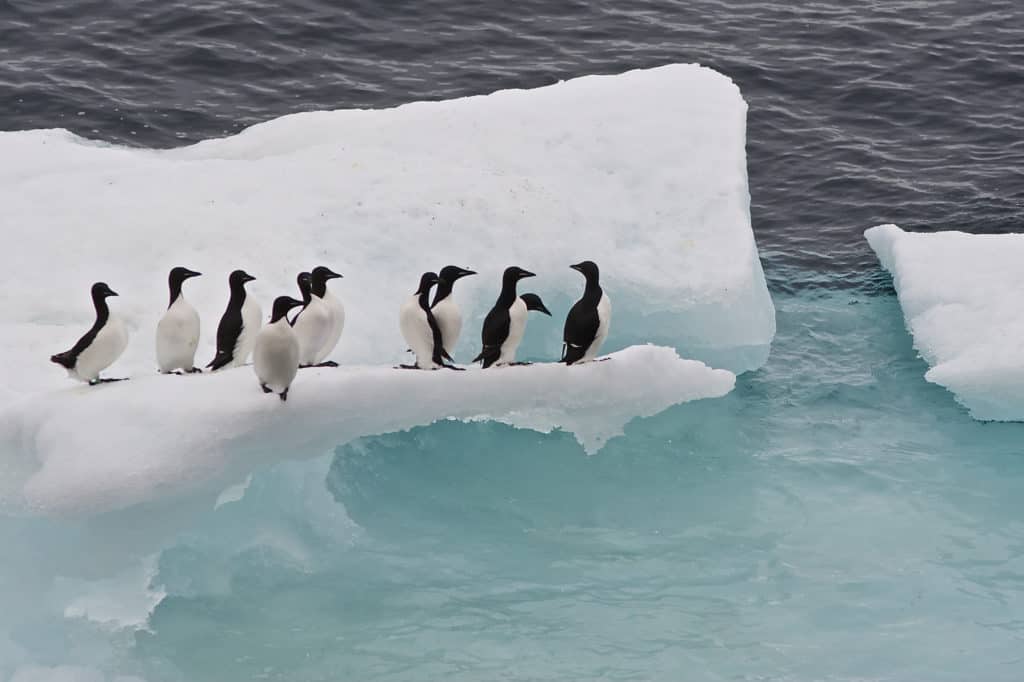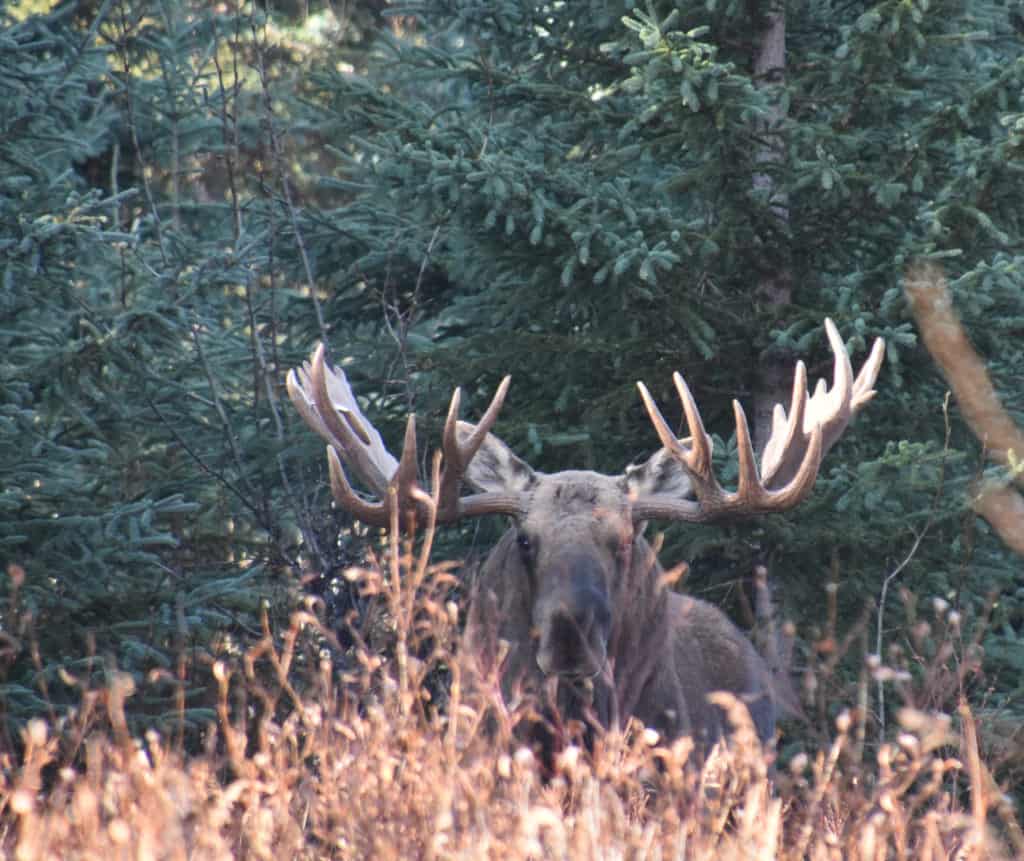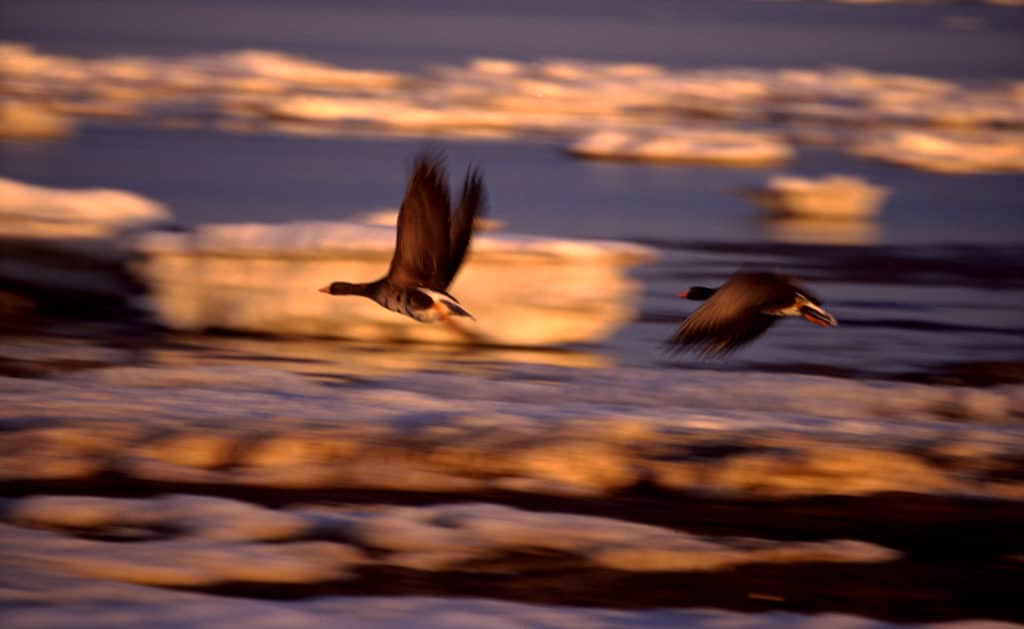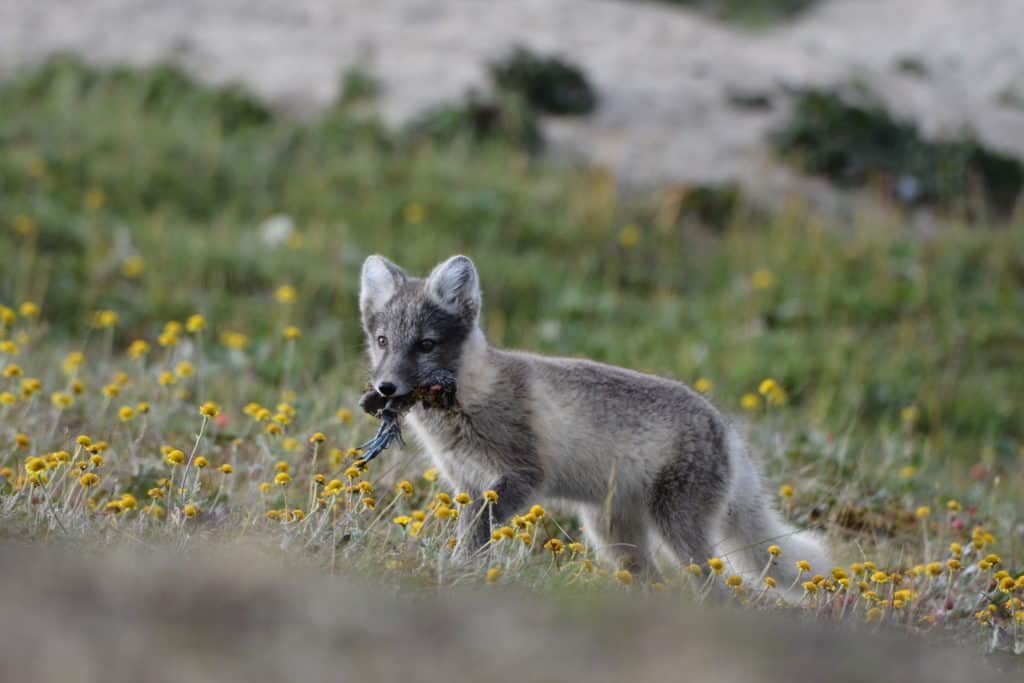Share this article
How is a changing Arctic affecting wildlife movement?
Long-term wildlife movement studies in the Arctic are hard to come by.
That’s because they can be expensive, requiring tags that communicate through satellite networks that require subscriptions. When movement studies are conducted, they usually only include a couple dozen individuals, and funding may only last a few years. And since they are usually only on one species, it may be difficult to look at the larger Arctic ecosystem.
But as the Arctic undergoes the fastest rate of climate change in the world, a team of researchers wanted to how it was affecting a suite of animals at the top of the world. Temperatures have increased there by about 2.3 degrees Celsius since the 1970s. Springs are getting earlier, and winters are getting warmer. Meanwhile, human development is expanding and ice is shrinking.

Thick-billed murres (Uria lomvia) stand on ice. Credit: Kyle Elliott
“We really wanted to know how the animals in this part of the ecosystem respond to these drastic changes,” said Gil Bohrer, a professor at Ohio State University and corresponding author of the paper on the database published in Science.
So researchers decided to create a large database as a tool that researchers can tap into to learn more about animal movement in the Arctic.
“My hope is that it will catch on as a research tool and the foundation of collaboration among the large Arctic animal movement community,” he said.
To create the database, Bohrer’s colleagues at a NASA-funded study first contributed their own animal movement data, which was collected for animal movement studies that combine satellite imagery of the ecosystem conditions throughout the Arctic. Then, they began expanding the database by reaching out to other researchers working in the Arctic. “We asked everyone to participate, emailed everyone we knew and searched archives for data that was collected in the Arctic,” he said. “There was a large willingness to participate.”

A moose in Alaska. Credit: Kyle Joly
The team used the Movebank database, a free online database created by the Max Planck Institute of Animal Behavior in Germany, which stores animal tracking data. “Beyond being a dump of data, it has a large platform of tools to manage, share, and archive the data, as well as research tools to study and model the data” Bohrer said. “Everything you need to do with a dataset, Movebank has tools to do it in a guided way.”
To participate in the archive, data owners needed to upload the data to Movebank, indicate their willingness to contribute to the Arctic archive and choose a level of data sharing. All datasets added to Movebank have the same common format of information, which makes it easier to compare and share data for future projects. “It’s very easy to exchange dataset, because they are sitting on this common platform,” he said.

Greater white-fronted geese (Anser albifrons) flying over ice. Credit: Goetz Eichhorn
Using the Env-DATA research tools in Movebank, the information added to the dataset — a mix of published and raw data — can be linked to remote sensing data about vegetation, greenness, ice and snow, fire, precipitation, wind and ocean currents and other environmental information provided by NASA and the American and European weather services.
Bohrer and his colleagues decided to test the Arctic animal movement archive to answer some research questions. In one study, the team looked at long-term records of golden eagles (Aquila chrysaetos) and found that immature birds migrating north arrived earlier after mild winters, suggesting that warmer temperatures may cause them to migrate sooner, and they do so to a larger degree than mature birds, raising questions about nest survival.
In another study, tracking female caribou (Rangifer tarandus), they found that northern herds are giving birth earlier in the spring, while southern herds haven’t changed their patterns. Earlier calving dates is an advantage, as it tracks the earlier spring greening in the Arctic in recent years, but can be a problem, Bohrer said, because earlier spring is associated with higher weather variation, and late, deep spring snow is more likely to kill calves born earlier in the season.

A young polar fox (Vulpes lagopus). Credit: Helmut Kruckenberg
The team also looked at bear, caribou, moose (Alces alces) and wolf (Canis lupus) movement in the Arctic. They found that the warmer the summer, the more caribou and moose move, while wolves and black bears (Ursus americanus) move less, meaning predators may have an easier time finding prey, while prey have a harder time finding food. “That can cause a trophic mismatch,” Bohrer said.
Bohrer said he hopes to create archives like this in other ecosystems as well. “I hope it will grow and become the key go-to tool of animal movement for researchers in the Arctic,” he said. “I also hope this concept of an archive as a data collaboration platform will become common so we can work on other regions in the world, such as a tropical archive, and a desert archive.”
Header Image:
Using a large database they created, researchers studied movements of wildlife in the Arctic.
Credit: Zak Richter/NPS








